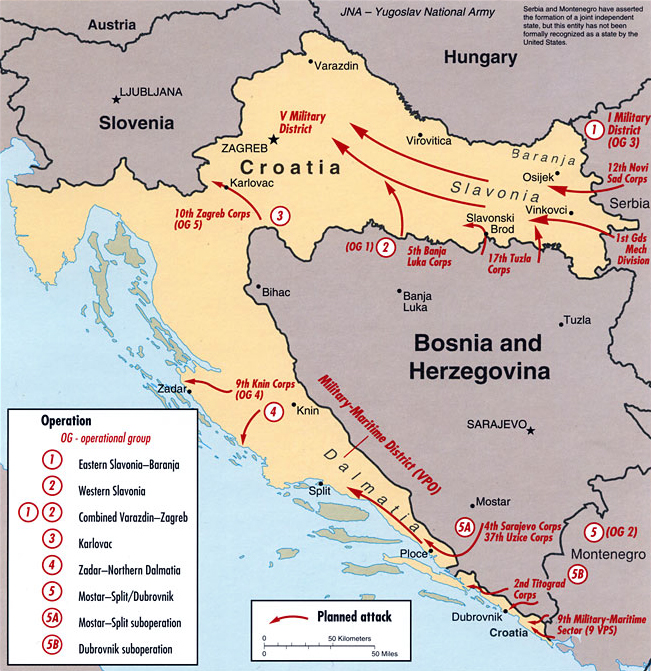|
Kneževi Vinogradi
Kneževi Vinogradi (; sr-cyr, Кнежеви Виногради) is a village and municipality in Croatia. It is situated in the Osijek-Baranja County, on the southern slopes of Bansko Brdo, 11 km southeast of Beli Manastir. It lies at an altitude of 103 m. Chief occupations of villagers include farming, viticulture, livestock breeding and dairy industry. At the time of 2011 census, Kneževi Vinogradi was the only municipality in Croatia with a relative majority of Hungarians of Croatia. In Roman Empire, Roman times, the Donatium colony was located here, so Suljoš, as people call Kneževe Vinograde, is one of the oldest places in Baranja. Name The name of the village derived from Croatian words "knez" ("prince" in English) and "vinograd" ("vineyard" in English), hence the meaning of the name is "the prince's vineyards". The name of the village in Serbo-Croatian is plural. In other languages, the village in German language, German is known as ''Weingärten'' or ''Weingä ... [...More Info...] [...Related Items...] OR: [Wikipedia] [Google] [Baidu] |
Council Of Europe
The Council of Europe (CoE; , CdE) is an international organisation with the goal of upholding human rights, democracy and the Law in Europe, rule of law in Europe. Founded in 1949, it is Europe's oldest intergovernmental organisation, representing 46 member states from Europe, with a population of approximately 675 million ; it operates with an annual ordinary budget of approximately 500 million euros. The organisation is distinct from the European Union (EU), although people sometimes confuse the two organisations – partly because the EU has adopted the original Flag of Europe, European flag, designed for the Council of Europe in 1955, as well as the Anthem of Europe, European anthem. No country has ever joined the EU without first belonging to the Council of Europe. The Council of Europe is an official United Nations General Assembly observers, United Nations observer. Unlike the EU, the Council of Europe cannot make binding laws; however, the council has produced a numbe ... [...More Info...] [...Related Items...] OR: [Wikipedia] [Google] [Baidu] |
Hungarian Language
Hungarian, or Magyar (, ), is an Ugric language of the Uralic language family spoken in Hungary and parts of several neighboring countries. It is the official language of Hungary and one of the 24 official languages of the European Union. Outside Hungary, it is also spoken by Hungarians, Hungarian communities in southern Slovakia, western Ukraine (Zakarpattia Oblast, Transcarpathia), central and western Romania (Transylvania), northern Serbia (Vojvodina), northern Croatia, northeastern Slovenia (Prekmurje), and eastern Austria (Burgenland). It is also spoken by Hungarian diaspora communities worldwide, especially in North America (particularly the Hungarian Americans, United States and Canada) and Israel. With 14 million speakers, it is the Uralic family's most widely spoken language. Classification Hungarian is a member of the Uralic language family. Linguistic connections between Hungarian and other Uralic languages were noticed in the 1670s, and the family's existenc ... [...More Info...] [...Related Items...] OR: [Wikipedia] [Google] [Baidu] |
Knin
Knin () is a city in the Šibenik-Knin County of Croatia, located in the Dalmatian hinterland near the source of the river Krka (Croatia), Krka, an important traffic junction on the rail and road routes between Zagreb and Split, Croatia, Split. Knin rose to prominence twice in history, as the capital of both the Kingdom of Croatia (925–1102), medieval Kingdom of Croatia and briefly of the self-proclaimed Republic of Serbian Krajina within the newly independent Croatia, Republic of Croatia for the duration of the Croatian War of Independence from 1991 to 1995. Etymology The name is likely derived from the Illyrian language, Illyrian ''Ninia''. According to an alternative explanation, offered by Franz Miklosich and Petar Skok, the name - derived from a Slavic root ''*tьn-'' ("to cut", "to chop") - means "cleared forest". The medieval names of Knin include ; ; . The Latin name is still used as a titular see, titular episcopal see, the Diocese of Tinum. History Ancient The are ... [...More Info...] [...Related Items...] OR: [Wikipedia] [Google] [Baidu] |
Operation Medak Pocket
Operation Medak Pocket ( sh-Latn-Cyrl, Operacija Medački džep, Операција Медачки џеп), officially called by Croatians Operation Pocket-93 ''(Operacija Džep-93)'' was a military operation undertaken by the Croatian Army between 9 – 17 September 1993, in which a salient reaching the south suburbs of Gospić, in the south-central Lika region of Croatia then under the control of the self-proclaimed Republic of Serbian Krajina, was attacked by Croatian forces. The pocket was named after the village of Medak. The Croatian offensive temporarily succeeded in expelling rebel Serb forces from the pocket after several days of fighting. However, the operation ended in controversy due to a confrontation between the Croatian Army and United Nations peacekeepers as well as accusations of serious Croatian war crimes against local Serb civilians. Although the outcome of the battle against the Serbs was a tactical victory for the Croatians, it became a serious political ... [...More Info...] [...Related Items...] OR: [Wikipedia] [Google] [Baidu] |
SAO Eastern Slavonia, Baranja And Western Syrmia
The Serbian Autonomous Oblast of Eastern Slavonia, Baranja and Western Syrmia ( sh-Latn-Cyrl, Srpska autonomna oblast Istočna Slavonija, Baranja i Zapadni Srem, Српска аутономна област Источна Славонија, Барања и Западни Срем) was a self-proclaimed Serbian Autonomous Oblast (SAO) in eastern Croatia, established during the Yugoslav Wars. It was one of three SAOs proclaimed on the territory of Croatia. The oblast included parts of the geographical regions of Slavonia, Baranja, and Syrmia along the Croatian section of the Danube river Podunavlje region. The entity was formed on June 25, 1991, the same day the Socialist Republic of Croatia decided to withdraw from Yugoslavia, following the Croatian independence referendum, 1991. In the first phase of the Croatian War of Independence, in 1992, the oblast joined the breakaway Republic of Serbian Krajina (RSK) as an exclave and the only part of the RSK directly bordering Se ... [...More Info...] [...Related Items...] OR: [Wikipedia] [Google] [Baidu] |
Croatian War Of Independence
The Croatian War of Independence) and (rarely) "War in Krajina" ( sr-Cyrl-Latn, Рат у Крајини, Rat u Krajini) are used. was an armed conflict fought in Croatia from 1991 to 1995 between Croats, Croat forces loyal to the Government of Croatia—which had declared Independence of Croatia, independence from the Socialist Federal Republic of Yugoslavia (SFRY)—and the Serbs, Serb-controlled Yugoslav People's Army (JNA) and Serbs of Croatia, local Serb forces, with the JNA ending its combat operations by 1992. A majority of Croats supported Croatia's independence from Yugoslavia, while many ethnic Serbs living in Croatia, supported by Republic of Serbia (1992–2006), Serbia, opposed the secession and advocated Serb-claimed lands to be in a common state with Serbia. Most Serbs sought a new Serb state within a Yugoslav federation, including areas of Croatia and Bosnia and Herzegovina with ethnic Serb majorities or significant minorities, and attempted to conquer as muc ... [...More Info...] [...Related Items...] OR: [Wikipedia] [Google] [Baidu] |
Zmajevac
Zmajevac (; sr-Cyrl, Змајевац; ) is a settlement in the region of Baranja, Croatia. Administratively, it is located in the Kneževi Vinogradi municipality within the Osijek-Baranja County. The population is 974 people. Zmajevac was founded on the foundations of the Roman colony Ad Novas. In 1246, it is mentioned under the name Verusmorth. Geography Zmajevac is approximately 36 km north of Osijek and 22 km south of the border with Hungary. Serbia is approximately 8 kilometers away. Ethnic groups (2001 census) *701 - Hungarians *178 - Croats *10 - Serbs The Serbs ( sr-Cyr, Срби, Srbi, ) are a South Slavs, South Slavic ethnic group native to Southeastern Europe who share a common Serbian Cultural heritage, ancestry, Culture of Serbia, culture, History of Serbia, history, and Serbian lan ... *85 - others Notable people * Otti Berger (1898–1944) – textile artist and weaver External links Zmajevac on openstreetmap.org References {{Authority con ... [...More Info...] [...Related Items...] OR: [Wikipedia] [Google] [Baidu] |
Suza, Baranja
Suza (; sr-Cyrl, Cуза) is a settlement in the region of Baranja, Croatia. Administratively, it is located in the Kneževi Vinogradi municipality within the Osijek-Baranja County. Population is 636 people. Suza is mentioned for the first time in the gift document of King Bela IV from 1252 as Chuza. From 1698 to 1734, the village was owned by Eugene of Savoy. Today, Suza is an agricultural village, where wheat, barley, corn, sunflower, vines and fruit are grown. Ethnic groups (2001 census) *543 – Hungarians *35 – Croats *20 – Serbs The Serbs ( sr-Cyr, Срби, Srbi, ) are a South Slavs, South Slavic ethnic group native to Southeastern Europe who share a common Serbian Cultural heritage, ancestry, Culture of Serbia, culture, History of Serbia, history, and Serbian lan ... *38 – others References {{Reflist Populated places in Osijek-Baranja County Baranya (region) Populated places in Croatia where Hungarian is an official language ... [...More Info...] [...Related Items...] OR: [Wikipedia] [Google] [Baidu] |
Sokolovac, Baranja
Sokolovac ( sr-cyr, Соколовац, ) is a settlement in the region of Baranja, Croatia. Administratively, it is located in the Kneževi Vinogradi municipality within the Osijek-Baranja County. Population is 55 people. Ethnic groups (2001 census) *26 - Serbs *8 - Hungarians *6 - Croats The Croats (; , ) are a South Slavs, South Slavic ethnic group native to Croatia, Bosnia and Herzegovina and other neighboring countries in Central Europe, Central and Southeastern Europe who share a common Croatian Cultural heritage, ancest ... *15 - others References Populated places in Osijek-Baranja County Baranya (region) Serb communities in Croatia {{OsijekBaranja-geo-stub ... [...More Info...] [...Related Items...] OR: [Wikipedia] [Google] [Baidu] |
Mirkovac
Mirkovac (; sr-Cyrl, Mирковац) is a settlement in the region of Baranja, Croatia. Administratively, it is located in the Kneževi Vinogradi municipality within the Osijek-Baranja County. Population is 135 people. Ethnic groups (2001 census) *Croats = 118 *Serbs = 10 *Hungarians = 5 *others = 2 Notable people * Stevan Sekereš See also *Osijek-Baranja county Osijek-Baranja County (, , ) is a Counties of Croatia, county in Croatia, located in northeastern Slavonia and Baranya (region), Baranja which is defined part of the Pannonian Plain. Its center is Osijek. Other towns include Đakovo, Našice, Val ... * Baranja References {{coord, 45, 44, N, 18, 48, E, display=title, region:HR_type:city_source:GNS-enwiki Populated places in Osijek-Baranja County Baranya (region) ... [...More Info...] [...Related Items...] OR: [Wikipedia] [Google] [Baidu] |
Kotlina, Baranja
Kotlina (; sr-Cyrl, Koтлина) is a settlement in the region of Baranja, Croatia. Administratively, it is located in the Kneževi Vinogradi municipality within the Osijek-Baranja County. The population is 334 people. Ethnic groups (2001 census) *Hungarians = 295 *Croats = 26 *Serbs = 3 *others = 10 See also *Osijek-Baranja county Osijek-Baranja County (, , ) is a Counties of Croatia, county in Croatia, located in northeastern Slavonia and Baranya (region), Baranja which is defined part of the Pannonian Plain. Its center is Osijek. Other towns include Đakovo, Našice, Val ... * Baranja References {{coord, 45, 47, N, 18, 44, E, display=title, region:HR_type:city_source:GNS-enwiki Populated places in Osijek-Baranja County Baranya (region) ... [...More Info...] [...Related Items...] OR: [Wikipedia] [Google] [Baidu] |
Karanac
Karanac (; sr-Cyrl, Kapaнaц) is a settlement in the region of Baranja, Croatia. Administratively, it is located in the Kneževi Vinogradi municipality within the Osijek-Baranja County. Population is 1,065 people. Today, the village mainly lives on tourism. The place once belonged to the manor of Darda. Ethnic groups (2001 census) *Croats = 429 *Serbs = 341 *Hungarians = 219 *others = 76 See also *Osijek-Baranja county Osijek-Baranja County (, , ) is a Counties of Croatia, county in Croatia, located in northeastern Slavonia and Baranya (region), Baranja which is defined part of the Pannonian Plain. Its center is Osijek. Other towns include Đakovo, Našice, Val ... * Baranja * Church of St. Stefan Štiljanović, Karanac References {{Coord, 45.761, N, 18.684, E, source:hrwiki_region:HR, format=dms, display=title Populated places in Osijek-Baranja County Baranya (region) ... [...More Info...] [...Related Items...] OR: [Wikipedia] [Google] [Baidu] |




